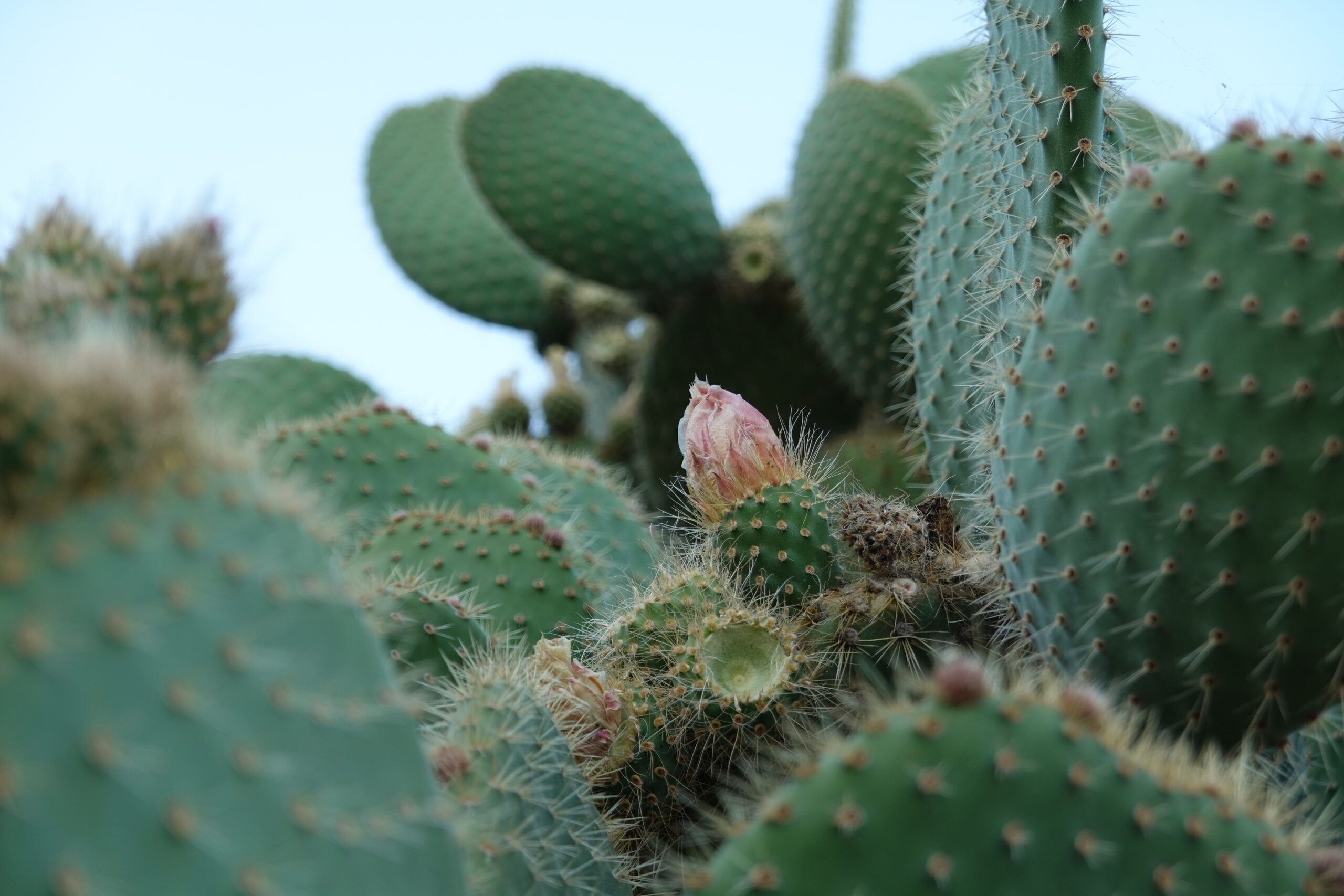Is Organic really Organic ?
It’s now been a little bit over 7 month since I got in the US. By then, I’ve had the opportunity to spend quite some time roaming around the aisles of American grocery stores.
Just like anywhere else on the planet, the shelves are stuffed with products that are specific to the region’s farming system and its people. Although, it feels unnecessary to remind you guys that mundialisation has taken the local dimension to a much broader scale. Making a supermarket in the US and in Europe look very much alike.
Despite the variety of cultures, cuisines and places associated with the products we buy in store, one label remains prevalent: the Organic label (or Biologique in French).
Here is one of the question I have been asking myself : Is the organic apple I buy in California the same as the one I would buy in Martigné-Ferchaud ? Let’s find out.
In this post, I will attempt to answer the following questions -amongst others: Who decides whether a product is organic or not ? What is the difference between US and EU organic standards ? If there is any, where am I better off as a consumer ?
This post compares the current situations under the restraints of the United States and Europe exclusively. Some passages might seem boring but I had to pull long and wearisome texts from the books in order to get somewhere
Speaking of, because I had to start somewhere in order to understand the big picture, I first studied Rachel CHANG’s paper : The United States vs. Europe’s Organic Certification Processes. From there, I explored different themes and examples.
Who sets the standards for the Organic Label ?
First thing first, let’s see who what are the main institutions in charge of setting agriculture standards in both places.
In the US it is The United State Department of Agriculture (aka USDA) formed in 1862, that “aims to meet the needs of commercial farming and livestock food production, promotes agricultural trade and production, works to assure food safety, protects natural resources, fosters rural communities and works to end hunger in the United States and internationally“.
On the other side of the Atlantic, established in 1958 during the Rome treaties after WWII, it is the European Commission (or EC)- the primary executive arm of the European Union and its 27 members- through the Common Agricultural Policy (CAP) that thrives to ensure “a fair income for farmers, increase competitiveness, improve the position of farmers in the food chain, set climate change action, care about the environment, preserve landscapes and biodiversity, support generational renewal, male rural areas vibrant, protect food and health quality and foster knowledge and innovation”.
What I think is fairly interesting is that we have on the one hand a governmental department (USDA) of a single country and on the other hand an organisation (EC) that represents no less than 27 countries, each of which has political, economical and other interests to defend.
It is kinda funny to see how old those two establishments are compared to the relative age of their respective sovereign nations.
How is the label defined ?
Let’s dig in and see how is the term Organic (or Biologique in French) defined from both side. Because yes: same word but different meanings. We will be focusing on plant products so we don’t get lost -let anima products aside for now.
To define the label, the USDA divided food products on the market into two larger categories
- agricultural products – like an apple
- processed products – such as flour
For agricultural products :
According to the United State department of Agriculture (aka USDA), the term “organic” can be defined as “a labeling term that indicates that the food or other agricultural product has been produced through approved methods“.
At first this looks pretty legit. Well it all depends on what’s behind these “approved methods”. They refer to the USDA’s standards and qualification for a product to be certified as “USDA organic”
We can fin them in the section 6504 of US code 7 concerning agriculture and national standards for organic certification. It states that in order to be labeled as organic, agricultural product shall:

USDA Organic Logo
(1) have been produced and handled without the use of synthetic chemicals, except as otherwise provided in this chapter;
(2) except as otherwise provided in this chapter and excluding livestock, not be produced on land to which any prohibited substances, including synthetic chemicals, have been applied during the 3 years immediately preceding the harvest of the agricultural products; and
(3) be produced and handled in compliance with an organic plan agreed to by the producer and handler of such product and the certifying agent.
But and this is a big but, despite the fact that these guidelines set limitations on the use of synthetic chemicals (1) and prohibited substances (2), loopholes can be found for each of these categories.
Indeed, the National List Of Allowed And Prohibited Substances gives the criteria for these exceptions.
If we take into account the Environmental Protection Lists Agency (EPA) lists mentioned in this Official List, there is more than 2,300 allowed pesticides meant to be “exceptions”.
For instance, Spinosad – A natural insecticide, is approved for organic use in the U.S. while the EU has restricted its use due to concerns over toxicity to bees and aquatic organisms. All those exceptions create a false sense of assurance in the quality of the “USDA organic” label.
It means that the same so called “organic” apples I buy in France and in the US are completely different from one another. This is an example for one Substance over one product. But imagine hundreds of substances over millions of hectares on billions of products. It can all look nasty real quick, as much for the consumer’s health as for the environment.
For processed products :
Compliance requirements for processed products can be found in section 6505 of U.S. Code 7. Amongst many, two exemptions caught my attention, stating that processed food can be considered organic if it:
(1) contains at least 50 percent organically produced ingredients by weight, excluding water and salt… determined to permit the word “organic”; or
(2) contains less than 50 percent organically produced ingredients by weight, excluding water and salt…determined to permit the word “organic” to appear on the ingredient listing panel to describe those ingredients that are organically produced in accordance with this chapter.
Again, The National list of allowed and prohibited substances has a Section called “Nonagricultural (nonorganic) substances allowed as ingredients in or on processed products labeled as “Organic” or “made with organic (specified ingredients or food group(s))” and “Nonorganically produced agricultural products allowed as ingredients in or on processed products labeled as “Organic””.
This information clearly states that some cookies for example, can still be labeled “USDA Organic” when 50% of their ingredients are not considered as organic. Such a level of uncertainty leaves room for harmful and synthetic substances to hide behind this “organic” label.

EU organic certified logo
In contrast, the EU’s policies seems to be much clearer and strictly prohibit the use of any synthetic substances in “organic” labelled foods. Nevertheless, synthetic resources and inputs may be permissible if there are no suitable alternative.
The logo can only be used on products when they contain at least 95% organic ingredients and additionally, respect further strict conditions for the remaining 5%. The same ingredient cannot be present in organic and non-organic form.
For example, organic bread production typically bans synthetic preservatives, but certain natural additives like ascorbic acid (vitamin C) may be allowed as a dough improver when no viable organic alternative is available.
Seems important to say that synthetic resources are used as a last resort when no organic alternative is available.
The regulations and policies aforementioned are applicable to plants and I’m not even going to touch the matter of the standards regarding animal products. However, what do you think happens when you feed any livestock with a feed that is not so much organic ? Well you get a not so much organic streak for lunch.
Who actually delivers the Organic Label ?
Has you probably have understood by now, the USDA and EC set the standards for the Organic Label. However, they do not deliver it themselves to every single organic farm within the US or Europe (this would be quite a hassle and logistically impossible).
In Europe, the organic logo can only be used on products that have been certified as “organic” by an authorised control agency or body. One of the reason the European Union has been able to maintain such hight standards over the years is because they rely on certification groups such as Ecocert (French-based business) or Biofournil (also french hihi) amongst ohers. These groups are independent companies that have been approved by the EC. This recourse to a third-party organization ensure a transparent and an unbiased monitoring of organic farming certifications. In addition, they make sure that every step of the producing process (inputs, production, processing, manufacturing, packaging, labeling, storage, distribution, import) comply with the Organic standards and requirements set by Europe.

AB certified logo
Their is another EU certification mark called Agriculture Biologique (or AB), that is also based in France (cocorico!!).
The label logois pretty much similar to the EU certified logo but is administered by the Institut National de l’Origine et de la Qualité (INAO). A company part of the French government under the Ministry of Agriculture.
Although the certification is somewhat similar to the EU logo, people’s perception seems a tiny bit different.

Baromètre de consommation et de perception des produits biologiques en France
Agence BIO/Spirit Insight
Février 2019
The certifying process in the US is a different game. This might explain why Americans in general have a significantly lower level of trust for the USDA organic logo. I did not take the time to pull you out some data but you can look it up.
The USDA uses “certifying agents”, who are individuals and not organizations. Nearly 80 agents are currently authorized to certify farms and businesses to the USDA organic regulations. Two main issues seems to rise up:
(1) They do it all over the world.
Out of the 80 certifying agents, only 48 are based on US territory. Which makes it tricky to keep an eye on everyone and making sure they are all doing a great job.
(2) “The USDA is not legally responsible for the conduct of certifying agents” states Dr. Liu of St. Mary’s University School Of Law States.
Which means those guys and girls can deem a product “genuinely organic”, be wrong (we only figure this years later), and because they are outside the country no one can really attack them.
In 2010, the USDA was found to have failed to conduct onsite evaluation of three certifying agents in Israel, Bolivia and Turkey 6 years after it conditionally granted accreditations to these agents – basically realised they were not legit 6 years too late. Those dudes collectively certified 1400 farms and producers (so probably millions of products over 6 years). The USDA never revoked the certifications and said that those regions were to dangerous to visit. For 6 years, all those products were freely circulating throughout the US market.
Many stories like these exist on both sides and it’s hard to really know what’s true. It’s like all this legislation is only made up to cover things up.
To wrap this up, the EU has implemented regulations, initiatives, and budgets that are superior to the USDA’s. It could be interesting to dig into different systems in other parts of the globe.
We could go into so much more details regarding animal products, international trade policies -what happen when USDA organic products are imported in Europe ?, budgets – how much each organization is willing to invest for organic agriculture ? (therefore its people’s health and the environment), education, the bought out of independents companies by larger American food companies – creating monopolies and hiding dirty stuff behind already existing labels and many more.
I also came across interesting articles on organic fraud and the insane corruption of big food companies on politics and scientific articles. I think you got it, there is so much more to explore, for next time.
Of course the EC and its Common Agricultural Policy are controversial (and rightfully so) and there is much more to explore about this system that dictate EU agricultural policies than what we have talked about today. But. By taking an approach based on the Organic label and thus the overall quality of the food delivered to the consumers on the market, I believe our health, farmed soils, farmers, natural common resources and others are better off in Europe.
I hope you learned something,
Cheers,
PS: here are some random links you can check out if you’re bored.
USDA organic products Organic 101: What the USDA Organic Label Means | Home
EU organic products Organic production and products – European Commission
EU substances that might or might not be used List-of-active-substances-approved-for-use-in-organic-agriculture.pdf cwd-basic-substances-in-organic-agriculture_en_0.pdf
International trade policies with the EU + Accredited certifying agent International Trade Policies: European Union | Agricultural Marketing Service
USDA national list of proibited and allowed substanced The National List of Allowed and Prohibited Substances | Agricultural Marketing Service eCFR :: 7 CFR Part 205 Subpart G — Administrative
Organic equivalence arangement Headline
Equivalence arrangement posing issue and EU sending way more to US than they import from it Recent EU Ruling on Labeling of Organic Products: Potential Impacts to U.S. – EU Trade and Organic Equivalence | OTA




